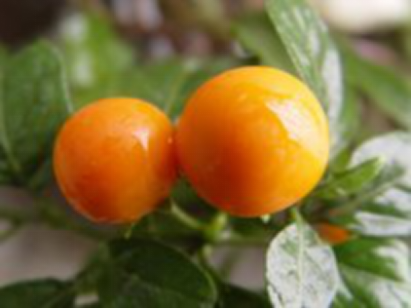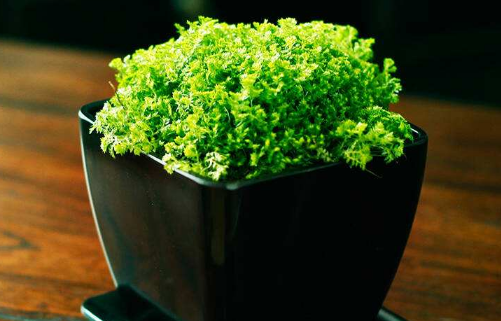Matters needing attention in culturing Golden Bract Flower
Golden bract flower is a kind of plant that likes the sun, so it should be bathed in the sun when breeding. If it is cultivated indoors, it is best to put it on the balcony to make it better for photosynthesis. If it is cultivated in the courtyard, try not to put it in the shade. Golden bract flower as a kind of cold-resistant plant, we should pay special attention in winter, especially in high latitude winter, the temperature of breeding golden bract flower should not be lower than 5 degrees Celsius, otherwise it may be difficult to survive. Golden bract flowers are vulnerable to red spiders and aphids when they are in full bloom, so flower growers control them in time when they are in full bloom.

It is scientifically proved that golden bracts are non-toxic, so flower growers can rest assured to breed them. If you want to know more about golden bracts, pay attention to and share our four Seasons Plant Internet Bar!
Are golden bracts poisonous? matters needing attention in the cultivation of golden bracts
Golden bract is an excellent variety of potted flowers, which is suitable for decoration of meeting rooms, halls, rooms and balconies. Is the golden bract poisonous? Is it suitable for breeding indoors? What should be paid attention to in the process of golden bract culture? Let's get to know each other.
Is the golden bract poisonous
The golden bract flower has a long flowering period and beautiful flowers, so it is a favorite family plant for many people, but many flower lovers worry about whether it is poisonous or not. In fact, we do not have to worry about this problem at all, because the golden bract flower is non-toxic, so it is possible to cultivate golden bract flower indoors.
II. Matters needing attention in the culture of Golden Bract Flower
Golden bracts prefer fertilizer, diluted organic fertilizer can be applied every half a month during the growth period, 0.2% potassium dihydrogen phosphate is also very suitable for it. Keep in mind that nitrogen fertilizer can not be too much, otherwise it will easily cause slender stems and reduced flowers. Phosphorus and potassium fertilizer should be applied twice during flowering to meet the nutritional needs of pregnant buds during flowering. If the fertilizer is insufficient in the maintenance process, the growth of the plant will slow down, the leaf color will be dim, and the inflorescence will be small and small. In addition, the irregular addition of 0.1% ferrous sulfate powder can ensure that the leaves are green and shiny, and can also prevent the leaves from yellowing. Golden bract flower is suitable for growing in the temperature range of 16-28 ℃. It is necessary to keep more than 5 ℃ in winter in order to survive the winter safely.
Golden bract is vulnerable to whitefly, red spider and aphid, so it should be controlled in time. Golden bracts often produce black mildew spots on flowers because of poor ventilation in flowering and winter greenhouses. This is mainly powder excrement. Stir-fried nymphs and adults gather at the base of bracts and leaf axils. When the density of adults is high, dense black spots will appear, making the flowers bloom poorly and gradually mildew. In addition, red wax frying and the harm of aphids will occur, which directly affect the growth and ornamental. Once found, it can be sprayed continuously with 1500 times of omethoate.
The above is that the golden bract is non-toxic, so we can rest assured of breeding. We should pay more attention to the breeding process in order to make the golden bracts bloom more luxuriantly.
Culture methods and matters needing attention of Golden Bract Flower
Culture methods of Golden Bract Flower temperature and Light
The suitable temperature for the growth of Golden Bract is between 15-25 ℃, and the safe overwintering temperature should be kept above 10 ℃, otherwise the plant will stop growing.
Golden bracts like warm, humid, sufficient light growth environment, but should pay attention to appropriate light, avoid summer strong light direct, do a good shade work, it is best to place in a semi-shaded place to maintain, while paying attention to ventilation. Keeping the full light of plants in spring, autumn and winter is beneficial to the healthy growth of plants and reduce diseases. If the plant is placed in an overshadowed environment for a long time, the phenomenon of overgrowth will occur, and the florescence will be delayed and the flowering will be less.
Watering
In the growing period of golden bracts, it is necessary to keep the basin soil moist, but also to maintain the high air humidity of its surrounding environment, but must not accumulate water, otherwise it is easy to rot the roots. It is usually watered once a day in spring and autumn. Attention should always be paid to improving the air humidity around the flowerpot in summer or during drought. Water should be watered 2-3 times a day in summer, and spray water to the leaves at the same time. In winter, watering needs to be controlled to keep the basin soil slightly moist. However, if the temperature in winter is above 25 ℃ during the day and about 15 ℃ at night, the plant can still blossom, and normal water and fertilizer management can be carried out at this time.
Soil
The cultivated soil of Golden Bract requires acidic soil with fertile, loose, well drained and breathable, and avoid clayey heavy soil. For the allocation of basin soil, rotten leaf soil, garden soil, river sand and mature organic fertilizer can be mixed evenly according to the ratio of 5 to 1.
Fertilizer application
Golden bracts like fertilizer and apply mature thin liquid fertilizer every 2 weeks during the growth period to promote the plant to grow vigorously and blossom more. During flowering, phosphorus and potassium fertilizer should be applied twice to ensure the nutrition of bud flowering.
Matters needing attention in the Culture of Golden Bract Flower Pest Control
The main diseases and pests of Golden Bract Flower are red spiders, aphids, scale insects and so on, which must be sprayed once a month with the mixture of 1000 foliar and thiophanate methyl to control.
Disease prevention and cure
The common diseases of Golden Bract are powdery mildew, coal pollution and so on. In the case of plant disease, the former can be sprayed with 70% thiophanate wettable particles 800 ~ 1000 times or 25% trimethoprim wettable particles 800 ~ 1000 times to prevent the disease. The latter is generally sprayed with 40% omethoate 800 times or Dysenamine 500 times 800 times.
- Prev

Winter coral diseases and insect pests and their control methods
1. Disease. When planting winter corals, you should pay attention to the fact that winter corals are easy to get anthracnose at high temperatures in summer. This disease is usually caused by fungi. From June to July every year, it is not only high temperature, but also rainy, and high humidity in the air. Therefore, winter corals in this season are extremely vulnerable to anthracnose.
- Next

How to raise coral fern in green space
The soil green space coral fern has relatively strict requirements on the soil. if we want to choose loose, breathable and well-drained soil, we can generally configure it ourselves and use a mixture of peat soil, perlite and vermiculite to get the soil that the plant needs. It needs to be noted that the plant likes a wet environment.
Related
- Fuxing push coffee new agricultural production and marketing class: lack of small-scale processing plants
- Jujube rice field leisure farm deep ploughing Yilan for five years to create a space for organic food and play
- Nongyu Farm-A trial of organic papaya for brave women with advanced technology
- Four points for attention in the prevention and control of diseases and insect pests of edible fungi
- How to add nutrient solution to Edible Fungi
- Is there any good way to control edible fungus mites?
- Open Inoculation Technology of Edible Fungi
- Is there any clever way to use fertilizer for edible fungus in winter?
- What agents are used to kill the pathogens of edible fungi in the mushroom shed?
- Rapid drying of Edible Fungi

